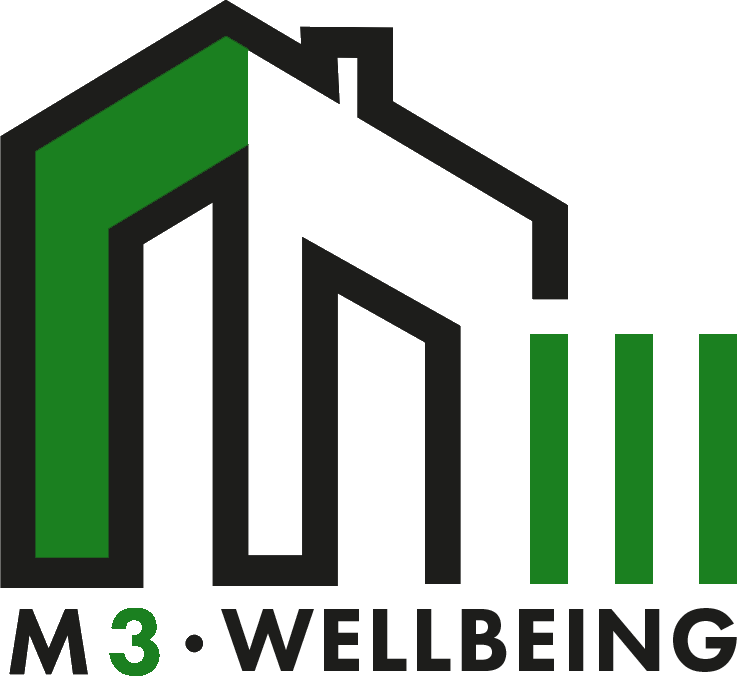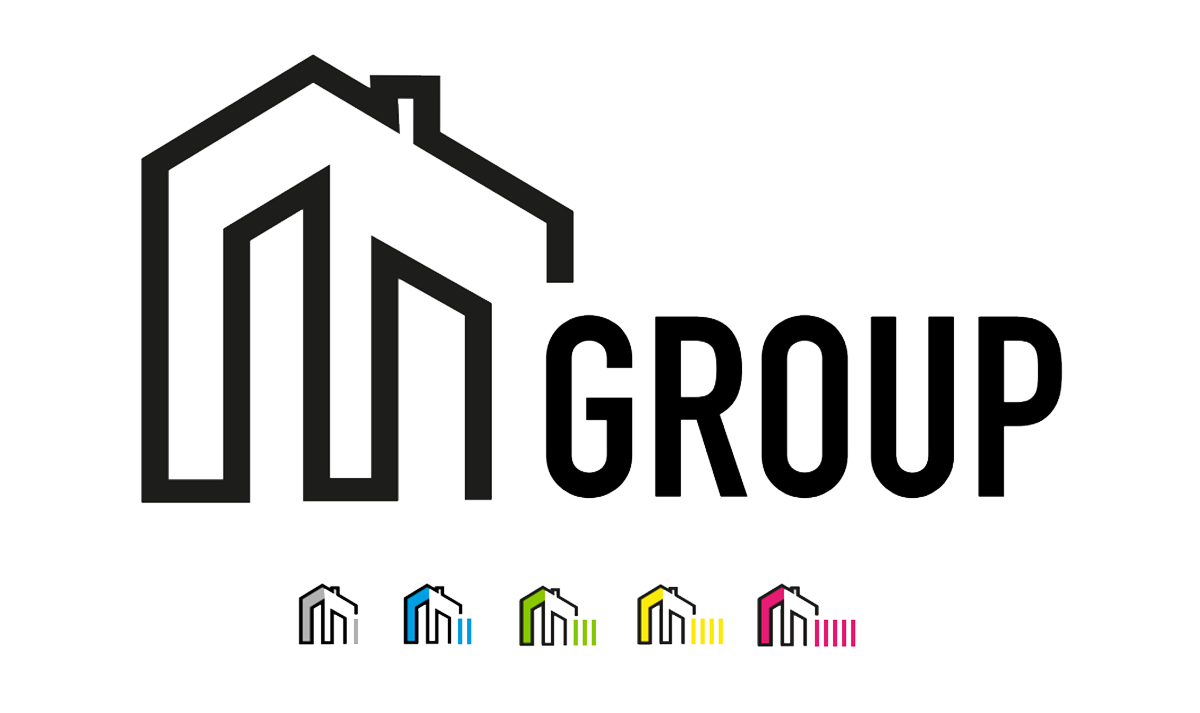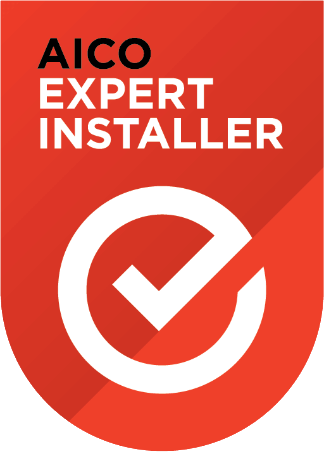As a landlord, ensuring your rental property provides a safe and healthy environment is not only a legal responsibility but it also plays a key role in keeping your tenants happy. Indoor air quality is often an overlooked aspect in maintaining a healthy home and it can be affected by various pollutants. Many of these pollutants can contribute to serious health issues, as well as structural problems such as mould growth and dampness.
Monitoring indoor pollutants in rental properties is crucially important in maintaining a safe and compliant living environment. The use of advanced environmental sensors, such as the GEM Smart and AICO Environmental Sensors, offered by M3 Wellbeing, can play a significant role in detecting and managing indoor air quality. These sensors monitor key pollutants, temperature, and humidity levels, allowing landlords to address issues before they escalate.
In this article, we will explain the key indoor pollutants landlords should monitor, the importance of adhering to legal guidelines, and how the right environmental sensors can help protect your properties and tenants.
Why Is Monitoring Indoor Pollutants Important?
Indoor air quality is often much worse than outdoor air quality due to the confined nature of homes and the accumulation of pollutants. Poor indoor air quality can lead to health problems such as allergies, respiratory issues, and long-term illnesses. It can also cause or exacerbate issues like mould, damp, and condensation, which may violate the Fitness for Human Habitation Act (2018), which can result in landlords being legally vulnerable.
Landlords are responsible for ensuring that their properties are habitable, which includes addressing any issues that could negatively impact tenants’ health. This responsibility is reinforced by legislation such as the Homes (Fitness for Human Habitation) Act 2018, which mandates that homes must meet certain standards. The law stipulates that landlords must provide safe, well-ventilated homes that are free from harmful pollutants.
Key Indoor Pollutants Landlords Must Monitor
There are several critical pollutants and factors that can affect indoor air quality in rental properties. Here’s a breakdown of the most common ones, why they matter, and how landlords can stay on top of them.
1. Carbon Dioxide (CO₂)
Carbon dioxide is a naturally occurring gas, but when levels indoors become too high, it can result in poor ventilation, increased humidity, and potentially serious health risks such as headaches, dizziness, and fatigue. High CO₂ levels can also show there is poor air circulation and indicate that other pollutants might be building up indoors.
Why monitor CO₂?
Monitoring CO₂ is important as elevated levels are a clear indicator of poor ventilation, which can also lead to the accumulation of more harmful pollutants, including volatile organic compounds (VOCs) and particulate matter (PM). CO₂ monitoring is very important in maintaining air quality and ensuring that tenants have access to fresh, breathable air.
How GEM Smart and AICO Sensors Help:
GEM Smart Sensors continuously monitor CO₂ levels, offering real-time alerts and insights, allowing landlords to take prompt action.
The AICO Ei1025 Environmental Sensor also monitors CO₂ levels, helping landlords track air quality in real-time. The data collected helps in preventing poor ventilation and ensuring a healthy indoor atmosphere.
2. Volatile Organic Compounds (VOCs)
VOCs are chemicals that evaporate easily at room temperature and are commonly found in household products such as paint, cleaning supplies, and furniture. Over time, these chemicals can build up indoors and lead to a variety of health problems, including eye irritation, headaches, nausea, and damage to the liver and kidneys.
Why monitor VOCs?
High concentrations of VOCs can significantly compromise indoor air quality, particularly in newly renovated or redecorated properties. If left unchecked, they can pose serious health risks to tenants.
How GEM Smart Sensors Help:
GEM Smart Sensors offered by M3 Wellbeing provide comprehensive VOC monitoring, allowing landlords to detect even trace amounts of these harmful chemicals. The cloud-based platform provides real-time data, ensuring quick action can be taken to reduce VOC levels
3. Particulate Matter (PM)
Particulate matter refers to tiny particles that are suspended in the air. These can include dust, soot, and even microscopic pollutants from outside traffic or industrial activity. PM is particularly harmful when inhaled, as the smallest particles can penetrate deep into the lungs and even enter the bloodstream.
Why monitor PM?
PM is a leading contributor to respiratory problems, such as asthma and bronchitis, particularly in urban environments. Monitoring these particles is essential for preventing long-term health complications.
How GEM Smart Sensors Help:
GEM Smart Sensors can detect PM at various sizes, including PM2.5 and PM10. This comprehensive monitoring helps landlords reduce tenant exposure to dangerous particles by identifying problem areas and suggesting mitigation strategies like improved ventilation or air filtration.
4. Humidity
Maintaining an optimal humidity level is essential to preventing the growth of mould and damp, which can damage both property and tenant health. High humidity creates the perfect conditions for mould growth, while low humidity can cause dry skin and respiratory discomfort.
Why monitor humidity?
Prolonged exposure to mould can lead to respiratory problems and allergic reactions. High humidity can also lead to structural damage to a property, resulting in expensive repairs.
How GEM Smart Sensors and AICO Sensors Help:
Both GEM Smart Sensors and AICO Sensors (Ei1020 and Ei1025) monitor humidity levels and provide alerts when conditions become conducive to mould growth.
The AICO Ei1020 and Ei1025 Environmental Sensors specifically focus on tracking humidity levels throughout the property, allowing landlords to take timely action to prevent condensation, damp, and mould.
These sensors, combined with data on temperature, provide insights into moisture control, essential for preventing long-term structural damage.
5. Mould Risk
Mould spores thrive in damp, poorly ventilated environments and can spread rapidly throughout a property. In addition to structural damage, mould poses a serious health risk, especially to those with allergies, asthma, or weakened immune systems.
Why monitor mould?
Left unchecked, mould growth can result in significant damage to walls, ceilings, and furnishings, as well as create legal liabilities for landlords under the Fitness for Human Habitation Act.
How GEM Smart Sensors and AICO Sensors Help:
GEM Smart Sensors monitor conditions conducive to mould growth, such as humidity, temperature, and ventilation.
The AICO Ei1020 and Ei1025 Environmental Sensors are specifically designed to monitor conditions like humidity and temperature, which can trigger mould development. These sensors help landlords identify and address damp and mould issues early, preventing costly repairs and health risks for tenants.
6. Temperature
Maintaining a stable indoor temperature is not only essential for comfort but also for preventing the build-up of pollutants and mould. Low temperatures can exacerbate damp issues, while excessively high temperatures can worsen the release of VOCs and particulate matter.
Why monitor temperature?
Fluctuating or extreme temperatures can worsen indoor air quality and make properties uninhabitable. Monitoring temperature ensures properties remain compliant with housing standards.
How GEM Smart Sensors and AICO Sensors Help:
Both GEM Smart Sensors and AICO Environmental Sensors (Ei1020 and Ei1025) monitor temperature, allowing landlords to ensure optimal indoor conditions.
These sensors offer real-time alerts when temperatures fall outside of desired ranges, preventing issues like condensation and poor air circulation, which can both affect tenant health and property conditions.
7. Tobacco Smoke and Vaping
Both cigarette smoke and vapour from e-cigarettes introduce harmful chemicals into the indoor environment. In properties where smoking is permitted or where tenants may be vaping, it is essential to monitor the air quality to avoid potential health risks and ensure compliance with tenancy agreements.
Why monitor smoke and vaping?
Second-hand smoke and vapour can expose non-smokers to harmful chemicals, increasing the risk of respiratory illnesses and cardiovascular problems. Landlords must be vigilant in properties with shared spaces or where smoking bans are in place.
How GEM Smart Sensors Help:
GEM Smart Sensors are equipped with advanced detection capabilities to monitor smoking and vaping, allowing landlords to enforce tenancy policies and maintain indoor air quality.
The Impact of Poor Air Quality on Legal Compliance
Landlords must recognise that poor indoor air quality is not just a health concern- it can also lead to significant legal and financial consequences. Under the Homes (Fitness for Human Habitation) Act 2018, landlords are legally required to ensure that their rental properties meet certain health and safety standards, which include maintaining good air quality. Failure to comply with these regulations can result in a variety of penalties that could severely impact a landlord’s ability to rent out properties and maintain profitability.
Legal Consequences of Non-Compliance:
Fines and Financial Penalties
Landlords who fail to maintain safe living conditions in accordance with the Fitness for Human Habitation Act can face hefty fines. The local council or tenants can take legal action if the property is deemed unfit for habitation due to issues like dampness, mould, or poor air quality. These fines can be substantial, especially if the problem has been ongoing and not addressed promptly
Tenant Compensation Claims
Tenants affected by poor air quality in rental properties have the legal right to pursue compensation claims. If a tenant suffers health issues or financial loss (for example, damage to personal property due to damp or mould), landlords may be held responsible for negligence. Compensation claims can be costly and, in some cases, may exceed the cost of preventive measures like installing air quality monitoring systems.
Legal Action and Court Proceedings
In more severe cases where landlords fail to address significant air quality or mould issues, tenants can take landlords to court. Under the Homes (Fitness for Human Habitation) Act, tenants can bring a claim against their landlord if the property is unsafe or detrimental to their health. If the court rules in the tenant’s favour, landlords could face court orders to improve conditions or even face a prohibition order, preventing them from letting out the property until remedial actions are taken.
Inability to Rent Out Non-Compliant Properties
Properties that do not meet the minimum standards for health and safety, including indoor air quality, may be deemed uninhabitable, preventing landlords from legally renting them out. This can lead to significant loss of rental income until the issues are resolved. Additionally, non-compliance can result in the local council issuing improvement notices that must be addressed within a given timeframe to avoid further action.
Damage to Reputation
Beyond financial and legal ramifications, landlords who consistently fail to maintain a healthy living environment risk serious reputational damage. Word of mouth, online reviews, and tenant dissatisfaction can deter future tenants and lead to higher vacancy rates. Also, housing associations and property management companies may be reluctant to work with landlords who have a history of non-compliance with health and safety standards.
How Air Quality Monitoring Can Help Landlords Stay Compliant
Installing GEM Smart Sensors and AICO Sensors from M3 Wellbeing can be a game-changer for landlords, offering a proactive approach to air quality management. These sensors provide real-time data on pollutants, humidity, and temperature, allowing landlords to address potential air quality issues before they escalate into legal problems. By continuously monitoring the environment and receiving alerts when conditions fall below acceptable standards, landlords can avoid the costly consequences of non-compliance and ensure that their properties are always fit for habitation.
How M3 Wellbeing Sensors Can Help
M3 Wellbeing offers specialised environmental sensors that are specifically designed for rental properties. The GEM Smart Sensors and AICO Sensors provide landlords with comprehensive air quality monitoring, allowing for proactive management of indoor pollutants. These sensors offer real-time data through a cloud-based platform, which is easily accessible via a dashboard.
- The GEM Smart Sensors monitor VOCs, CO₂, particulate matter, humidity, and even detect smoking or vaping.
- The AICO Ei1020 Environmental Sensor monitors temperature and humidity, helping to prevent issues like dampness and mould.
- The AICO Ei1025 Environmental Sensor monitors CO₂, temperature, and humidity, providing more extensive air quality data and ensuring that ventilation is adequate to maintain healthy conditions.
By using M3 Wellbeing‘s sensor solutions, landlords can ensure they are providing healthy and safe environments for tenants, while also remaining compliant with housing regulations. M3 Wellbeing’s tailored service includes a site survey, installation, ongoing support, and weekly reports, making it easy to maintain optimal air quality in your rental properties.
FAQs
Poor indoor air quality can be caused by several factors, including inadequate ventilation, high humidity, off-gassing from new furnishings or paints, and the use of cleaning chemicals that emit VOCs.
Ideally, you should monitor air quality continuously, which can be achieved by installing sensors such as the GEM Smart or AICO Sensors. These devices provide real-time data and alerts, ensuring you are always aware of any potential issues.
Yes, poor indoor air quality can lead to issues like damp, mould, and structural damage, which may decrease the value of the property over time. Ensuring good air quality helps maintain both tenant satisfaction and property value.
Monitoring CO₂ levels is essential for understanding ventilation quality, but it’s equally important to track other pollutants like VOCs, particulate matter, and humidity to ensure comprehensive air quality management.
To prevent mould, maintain proper ventilation, monitor humidity levels, and ensure that the property is adequately heated. Installing sensors such as AICO or GEM Smart can provide real-time alerts when humidity levels are too high, helping to prevent mould growth.
M3 Wellbeing: Providing Air Quality Monitoring Solutions
M3 Wellbeing is dedicated to improving indoor environmental quality for landlords and housing associations. Specialising in advanced air quality monitoring, M3 Wellbeing provides tailored installation and support services, offering solutions like the GEM Smart Sensors and AICO Environmental Sensors .
These sensors help landlords track pollutants, humidity and temperature, allowing for proactive management of air quality.
M3 Wellbeing offers ongoing support, real-time alerts, and comprehensive reporting, making it easier for landlords to ensure their properties meet legal standards and provide safe living conditions.
Contact Us
For more information on how M3 Wellbeing can help you monitor indoor pollutants in your rental properties, get in touch today to learn more about our tailored sensor solutions.
You can contact us on 01908 039526 or please head to our contact us page where you can complete our contact us form. We look forward to hearing from you.






